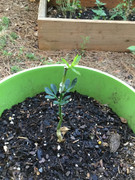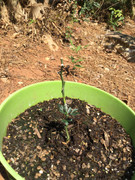I didn't say it's a useless variety! It's good candidate for hybridization.
I grow many from cuttings, I use them as a vigourous cold hardy rootstock, very good for pots.
Pocirus is a much better rootstock for its better cold hardiness. Ichang papeda is not much more cold tolerant than yuzu but offers low quality fruits, why should people consider ichang papeda in their hybridization program?
There exist several varieties of poncirus. Some poncirus varieties are vigorous, but some are not. I germinated many flying dragon seeds and seedlings did not seem to be alike. Some are very vigorous and others are extremely contorted and slow growing.
My friend had to graft ichang papeda onto poncirus to make sure it not getting injured in zone 8a.
The ichang papeda in pictures is not mine. I will ask him for one when his tree grows older.












